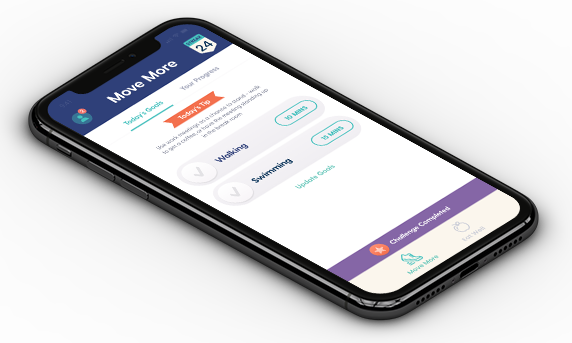Chronic disease
Select a conversation
Physical activity
Evidence shows that even brief 1 - 2 minute interventions can significantly improve patients’ physical activity, even if sedentary or with chronic disease. [1]
Below are a few simple ways you can start a conversation and encourage your patients to make positive changes to their physical activity levels.
Evidence shows that even brief 1 - 2 minute interventions can significantly improve patients’ physical activity, even if sedentary or with chronic disease. [1]
Below are a few simple ways you can start a conversation and encourage your patients to make positive changes to their physical activity levels.
Start a conversation
Let your patient know you are chatting about simple ways to improve physical activity, and ask if they are interested to find out more.
Learn more
Put patients at ease by letting them know you are having lifestyle conversations with all your patients.
Gently gauge your patient’s interest in having the conversation to assess if they are ready for change.
Focus on the positives from the patient’s point of view to foster a constructive, two-way conversation.
If patients are not interested, invite them to make a follow-up appointment when they are ready to chat.
Engage and assess
Engage your patient by asking some simple questions and asses their readiness to change. Find out how much physical activity they currently do each day.
Learn more
Assess if your patient is ready to commit to healthy changes with some simple questions. Patients are more receptive to change when they feel their clinician has listened with empathy.
Would you like your health to be different, and, if so, how?
How do you feel about improving your physical activity?
Could you manage some small regular exercise activity, starting today?
Understand your patient’s challenges
Work together to discover challenges or barriers to exercise, by asking simple questions.
Tell me about the things that might make it hard for you to exercise.
Would your family and friends support you becoming more active?
Is there a gym or park or another safe place where you can exercise?
Are there any gender or cultural barriers to physical activities for you?
Learn more
Identify your patient’s barriers and enablers to physical activity within their social and physical environments, to support a conversation about potential strategies and improve their potential for success.
Potential barriers to physical activity might include:
Limited time, fatigue, family obligations or other competing priorities
A lack of safe paths or open spaces for activity away from traffic
Gyms or sports clubs which are too far away or too costly to join
Feeling self-consciousness about being active in a public space
Cultural expectations regarding the type of activity and its location
Safety issues, especially for women exercising alone in public spaces
Potential enablers of physical activity include:
Simple and easy to use self-tracking tools like Healthy Habits to foster motivation
Friends and family to exercise with together, or to provide support and childcare
Virtual support groups to challenge, motivate and encourage adherence to goals
Educate and engage
Start with simple, manageable and rewarding suggestions:
Your health will improve from just 10 minutes of brisk walking a day.
Learn more
Encourage patients that any positive changes to diet and exercise they make will help, no matter how small.
Make change more achievable by reiterating the importance of starting small and working up to bigger goals.
Motivate patients by letting them know that even a modest weight loss of just 5-10% can have a positive impact on health.
Make patients more open to change by letting them know that even a small increase in their physical activity levels can improve their health.
Encourage one small change today
Ask patients about the activities they would like to achieve. Set a small goal and let them know they can use the Healthy Habits app to help them set, track and reach their goal.
Learn more
Get an idea of your patient’s current activity level and suggest and agree on small changes to their existing levels.
Know your patient’s motivations, and work together to set achievable goals. Do they want to run 5 kilometres? Climb stairs more easily? Pick up grandkids without pain?
The Healthy Habits app is a simple and easy way to get your patients started
It guides patients to set small, achievable physical activity and nutrition goals
Your patient can choose their own goals and increase their goals over time
The app gives your patients simple tips and tricks to help them stay on track
The Healthy Habits app allows patients to link their data to your dashboard
You will be able to see how your patients have been tracking
Discuss behaviours and revise goals at their next appointment
An initiative by

In partnership with

